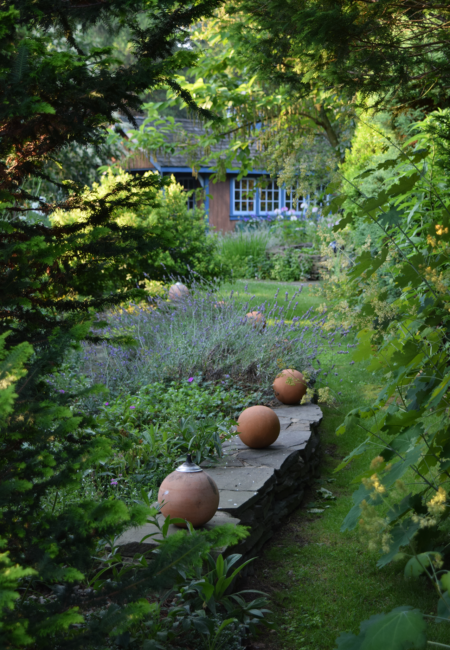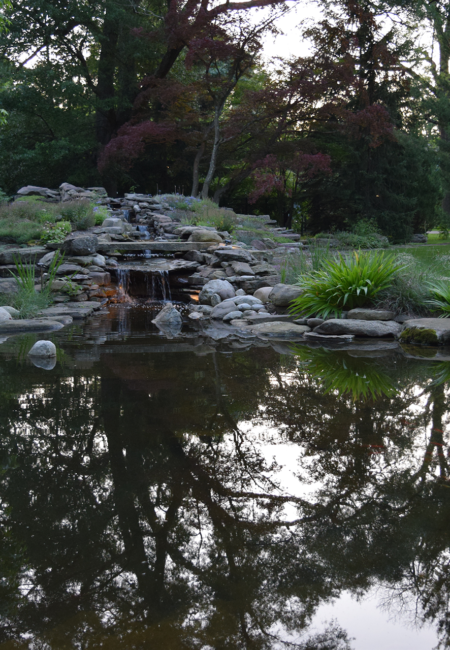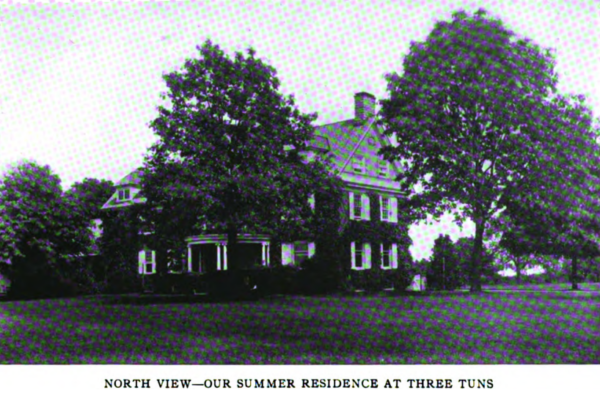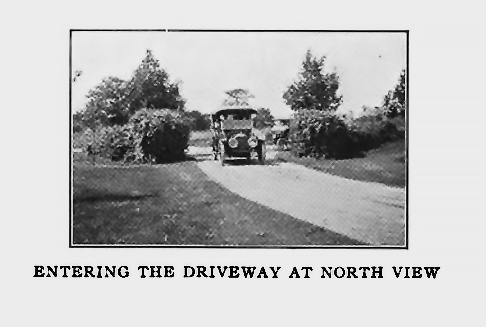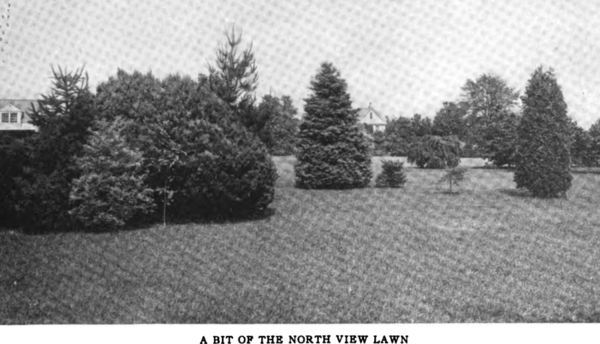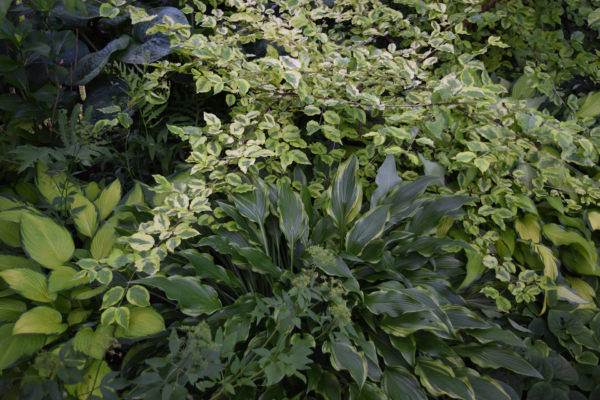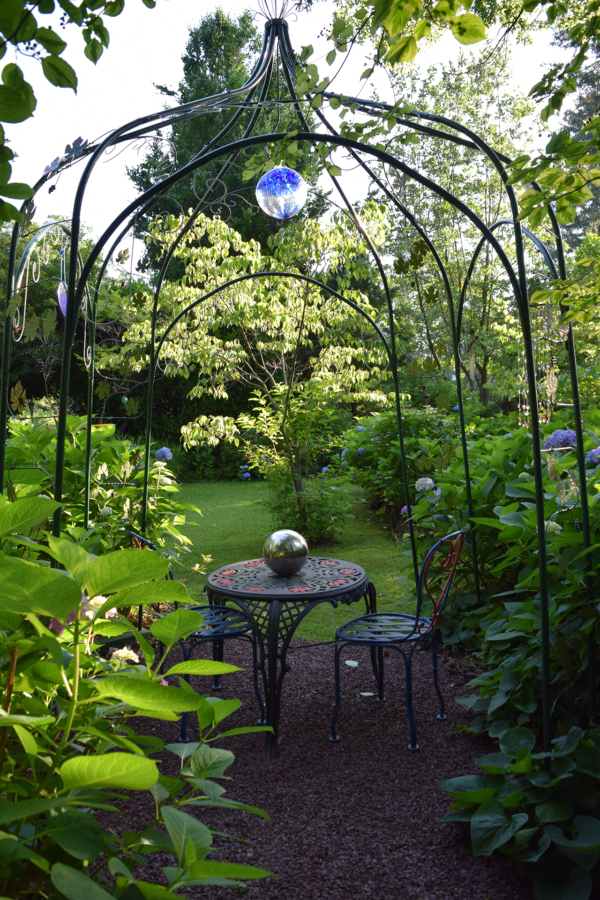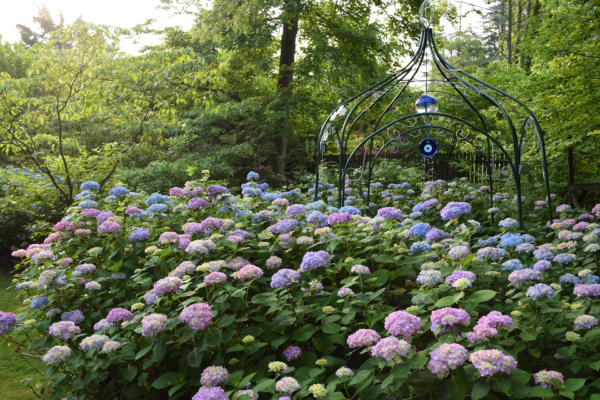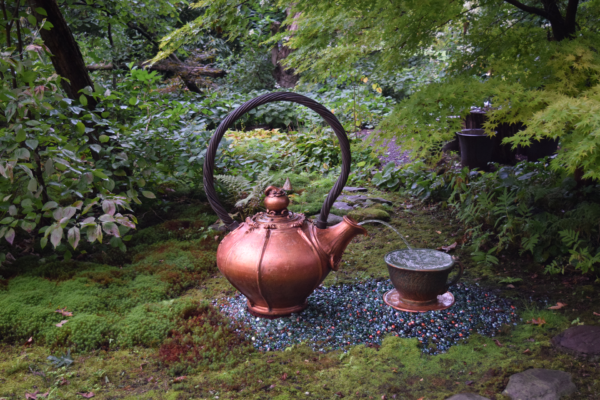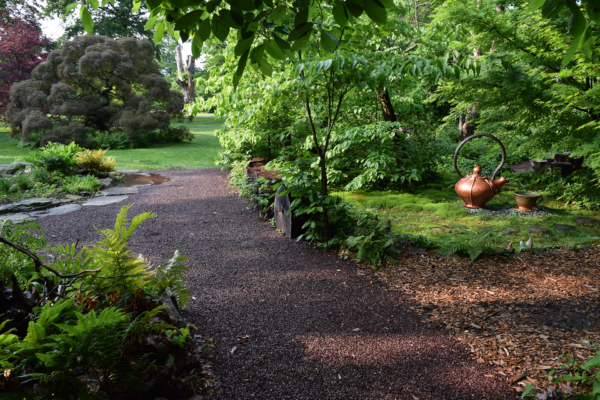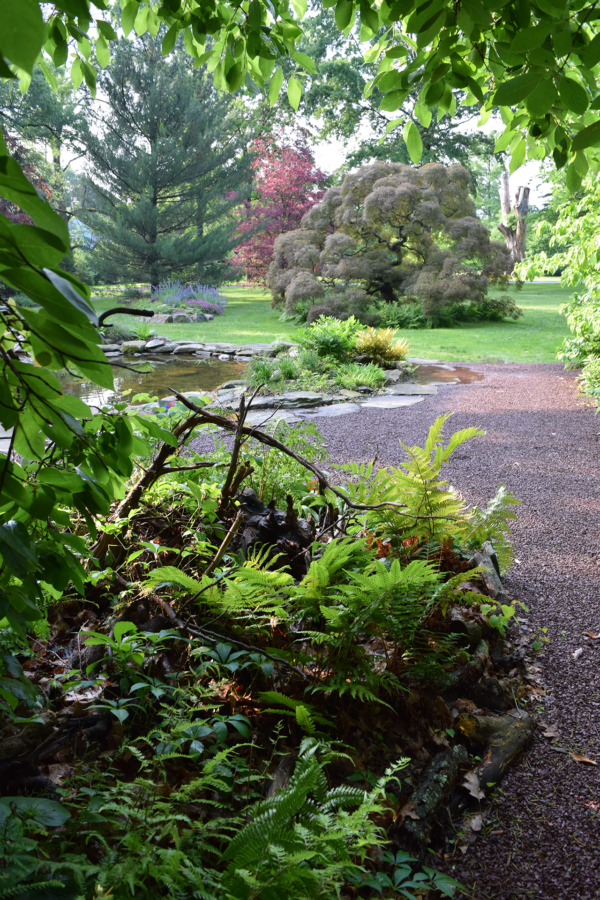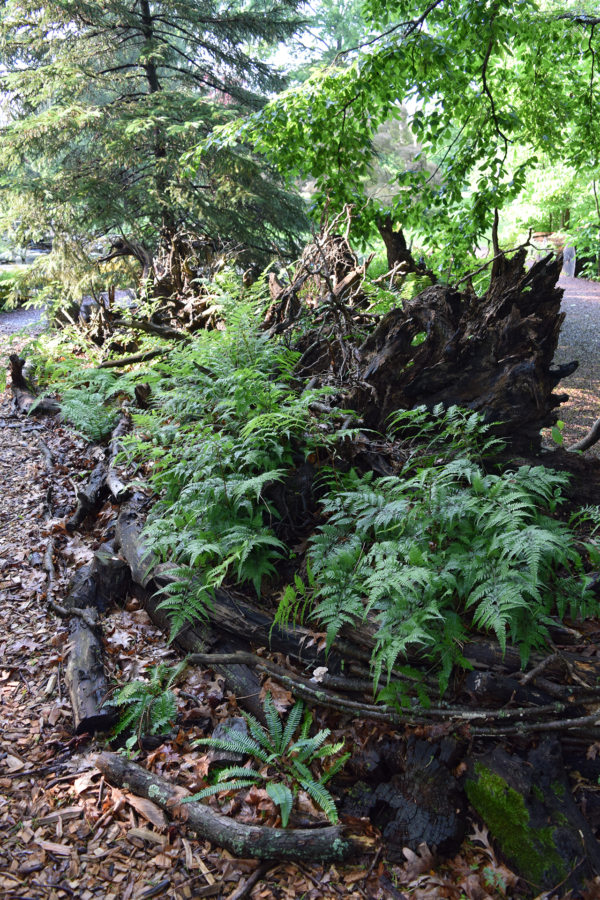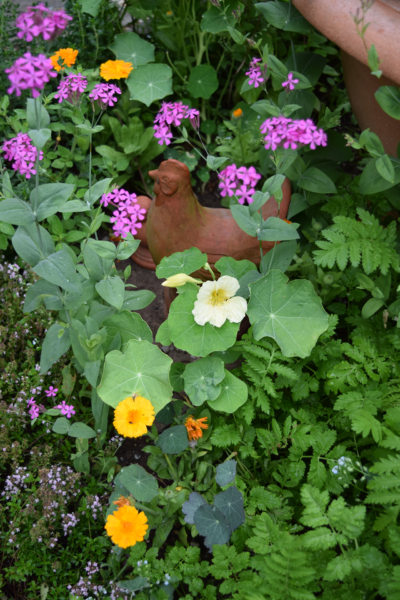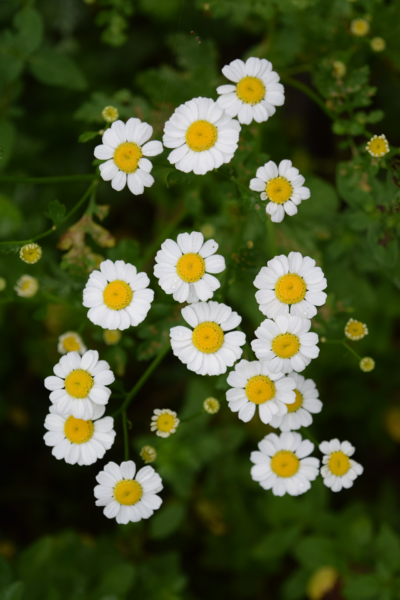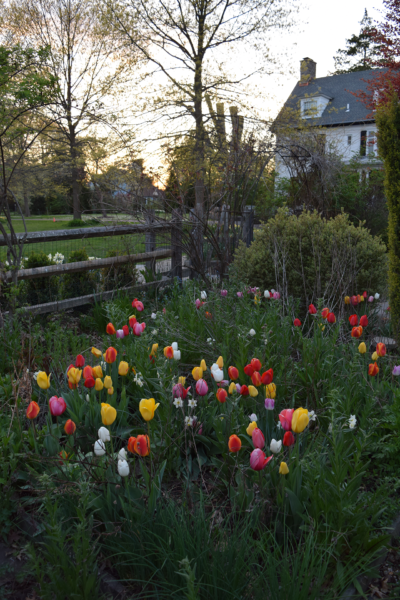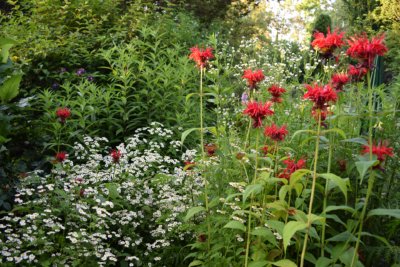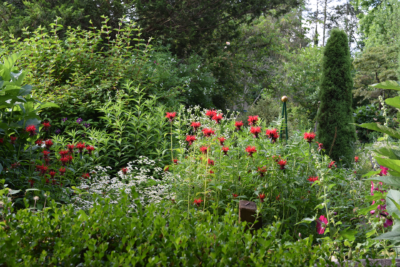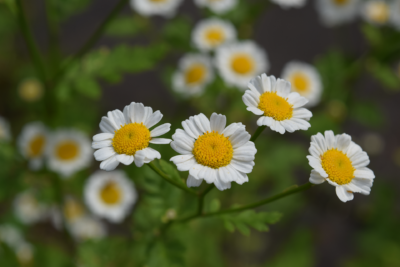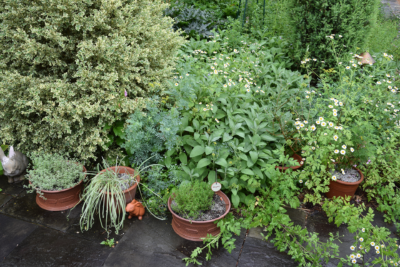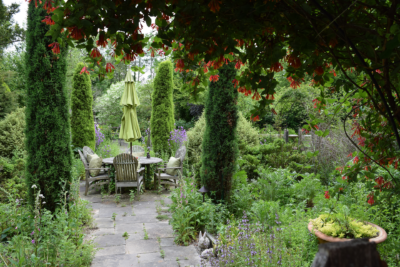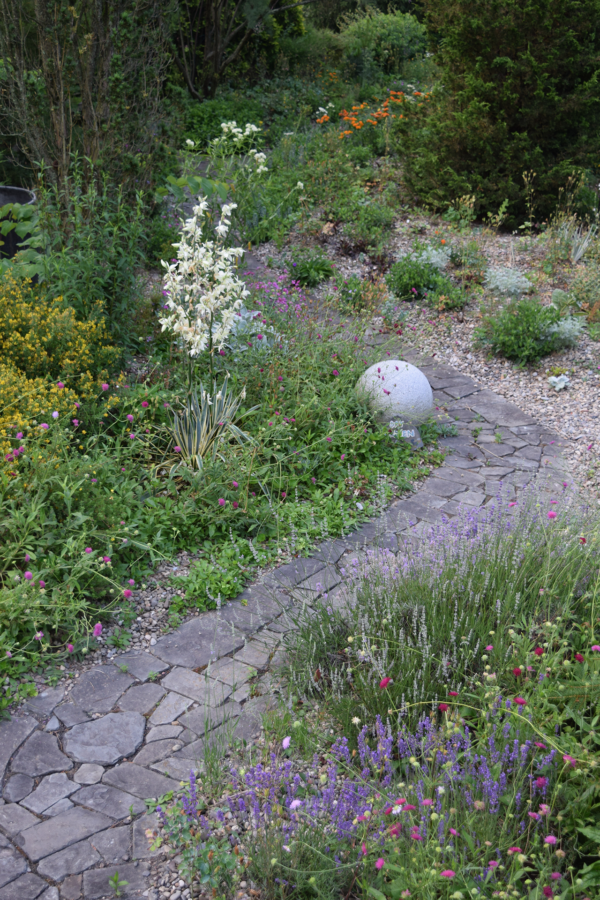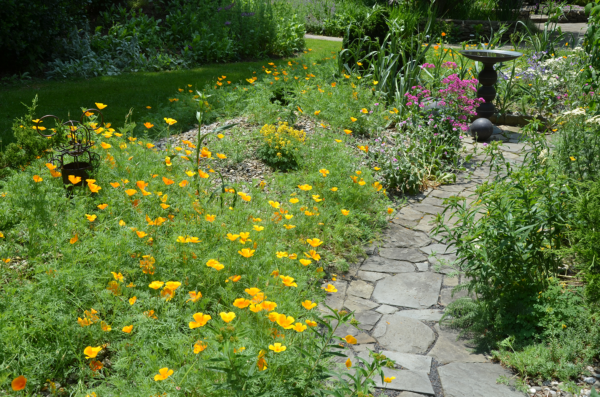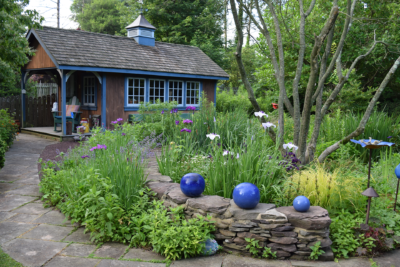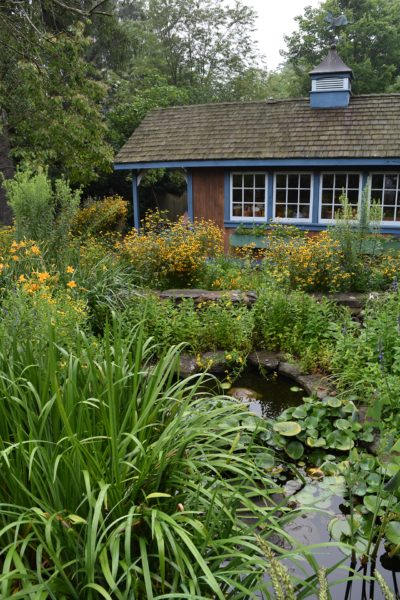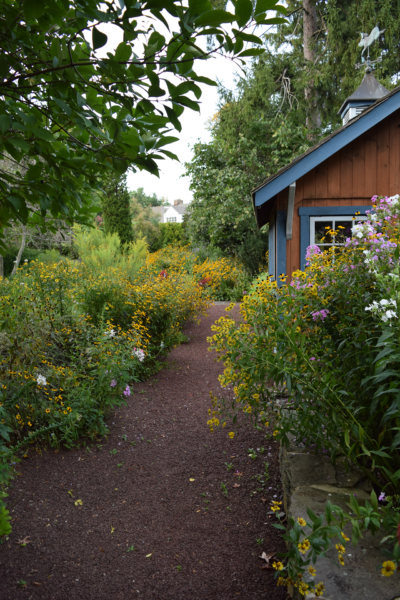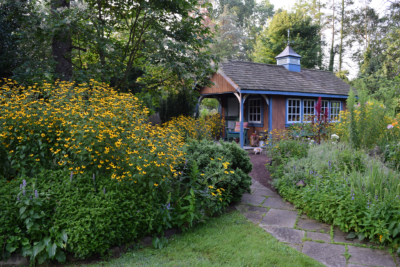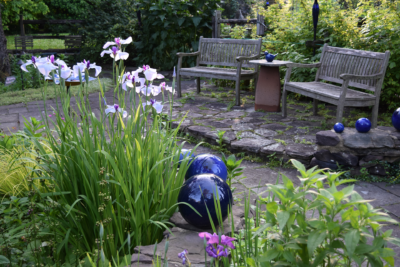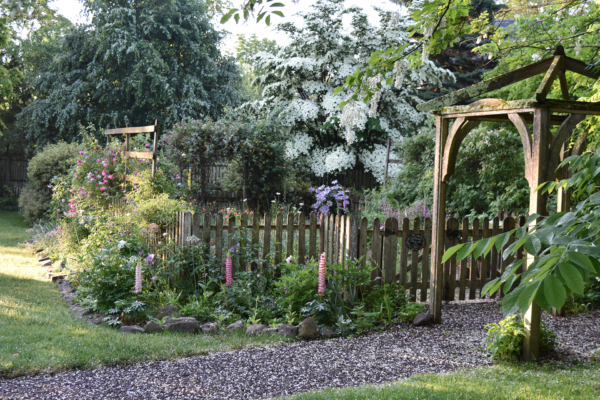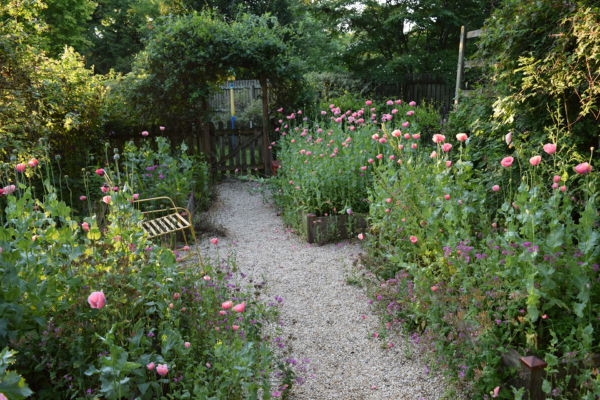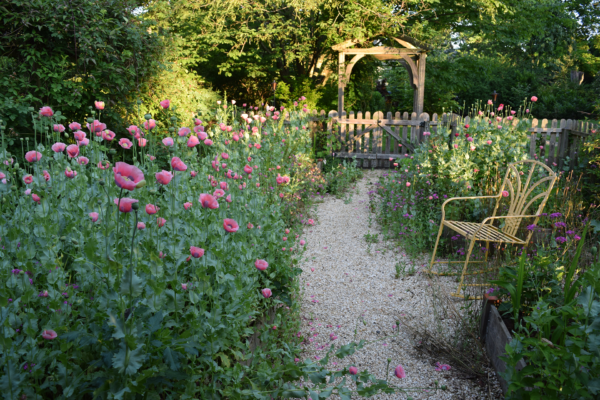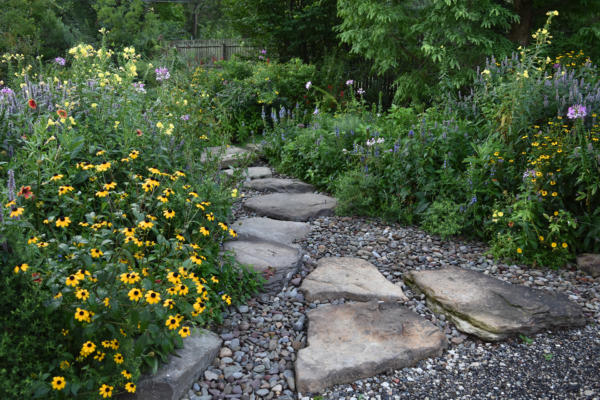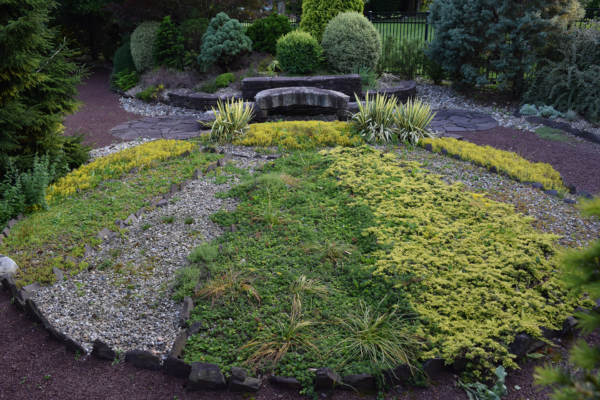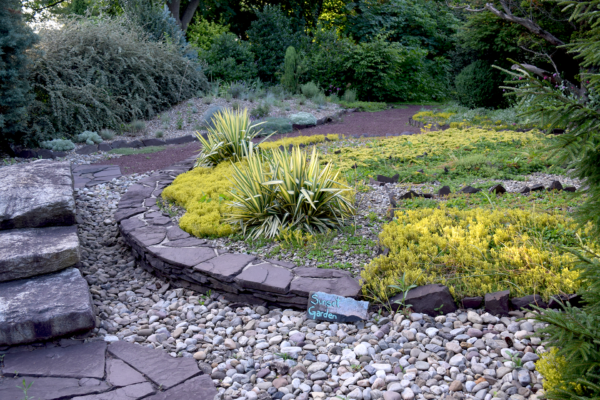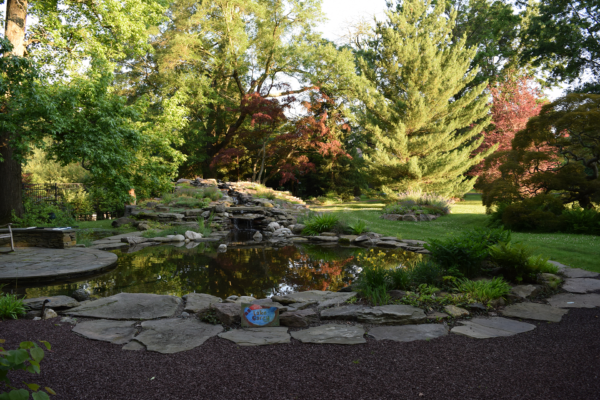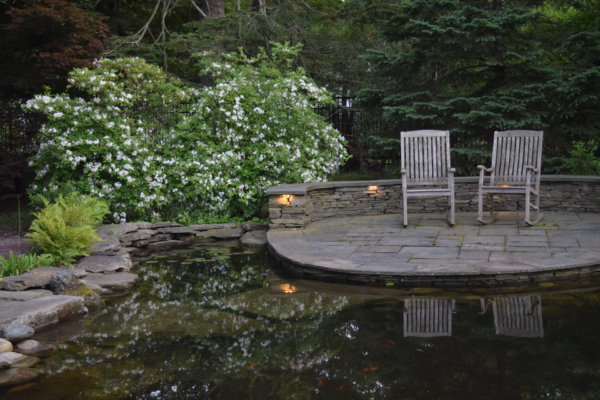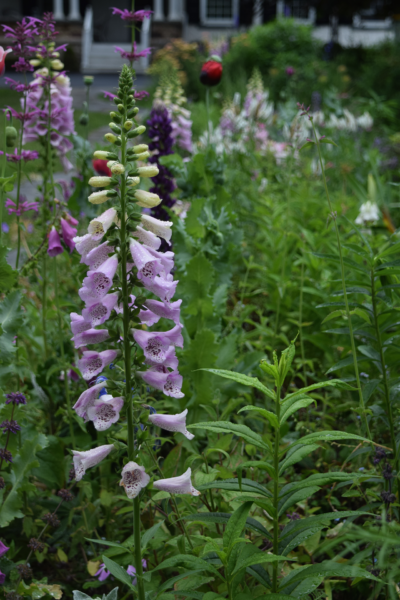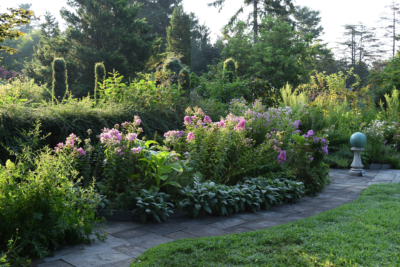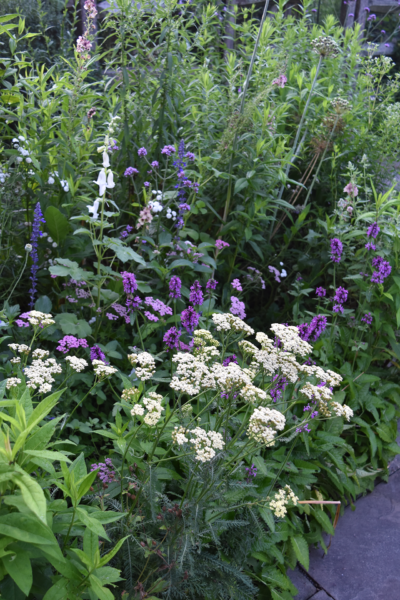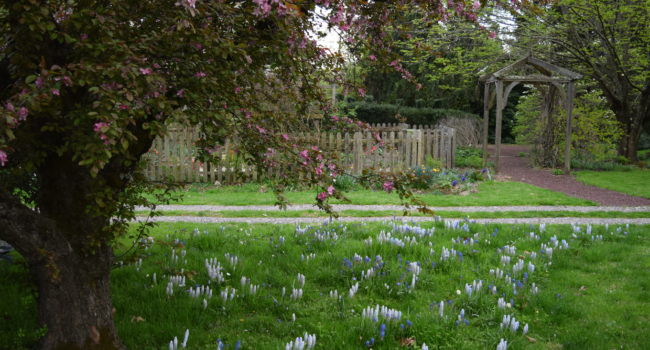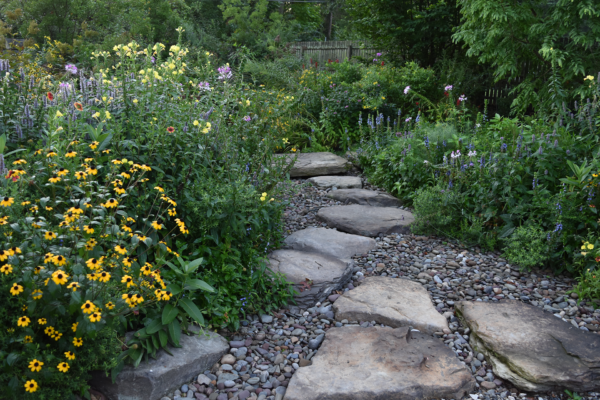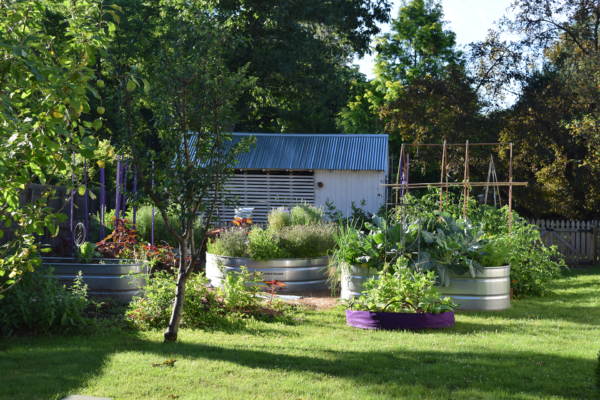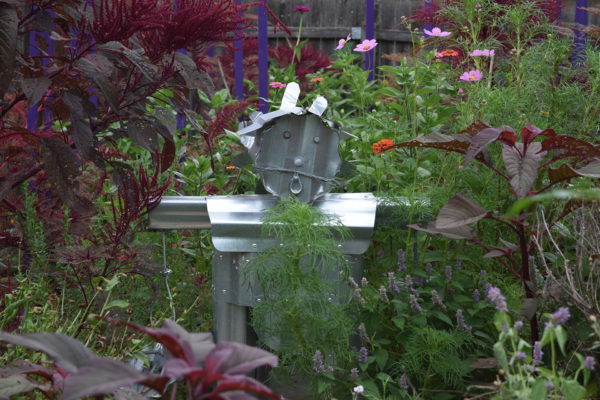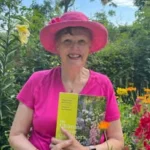DATES FOR OPEN GARDEN DAYS AT NORTHVIEW 2026
APRIL 24, 2026, JUNE 5, 2026, AND SEPTEMBER 18, 2026 (10AM – 12PM) – $20 PER PERSON FEE (CASH ONLY) – PLAN AHEAD AND PRE-ARRANGE TO ATTEND ALL THREE OPEN GARDEN DAYS FOR $40!! (PAYMENTS THROUGH VENMO).
RSVP TO JENNYROSECAREY@GMAIL.COM WITH QUESTIONS AND TO RECEIVE DIRECTIONS TO NORTHVIEW.
Take a Tour
Themed Gardens on Four and a Half Acres
Northview is a garden of four-and-a-half acres that contains smaller garden areas within it. Each of these separate areas have a theme or share certain environmental conditions. This allows me to pick a palette of plants that suits the soil, sun and water conditions while also adding the look that I am trying to achieve.
Endless Paths and Contemplative Spaces
The garden areas are linked by paths that allow you to walk around the garden. Many of the gardens contain seats or benches placed where you get a quiet place to sit or something to look at. There is a range of water features throughout the garden that bring sound, coolness, and water for wildlife. The whole garden is managed in a way that minimizes water use, uses environmentally friendly practices, and considers the impact of the garden on its occupants and the surroundings.
A Zone 6 Watershed Supports This Pennsylvania Treasure
The garden is situated in Three Tuns, Upper Dublin Township, Montgomery County, Pennsylvania, USA. It is on the watershed between the Delaware and Schuylkill Rivers, with fertile loam soil and located in the warm end of USDA hardiness Zone 6. It is about 300 feet above sea level.
A Brief Northview Garden History
The area that is now Northview Garden was originally part of the Lenni Lenape tribal lands. It was heavily wooded with trails that ran through and connected settlements. After colonization the land was cleared and used for farming. We also have some evidence that the land was part of a route of the underground railway to free slaves, with a stop in a nearby barn basement.
From Native Americans to Quakers
In 1887 a parcel of just over 100 acres was bought by Wilmer and Anna Atkinson. They were Quakers whose families had been in this area for some generations and had family living nearby. Wilmer was a founding editor of the publication called The Farm Journal. It was a very successful publication that was printed at its offices in Washington Square in Philadelphia. You can still see the building in the corner of the square.
Plan, Tracked and Shared With Model Farming
To further help his subscribers get accurate information Wilmer decided to have a model farm where he could grow fruit crops and then write about the results. He and his family, including three daughters, lived at North View – as they called it – during the summer and then went to Philadelphia in the winters.
125 Year Old Trees Still Adorn The Gardens
The area around the house was planted with trees ‘for the adornment of our lawn’. To quote a line from Wilmer’s autobiography. At this time trees were arriving from other parts of the world and Wilmer was fascinated by the new exotics like Japanese Maples. We still have some of his original trees that are well over 125 years old. Others have unfortunately died due to old age or storm damage.
From Rumors To New Stewardship
After the farm was sold by the Atkinsons it went through several owners and did not fare well for some of those years. The rumor is that it was a house of ill-repute that served visitors to the nearby Three Tuns Inn. After several more owners we purchased the property in 1997.
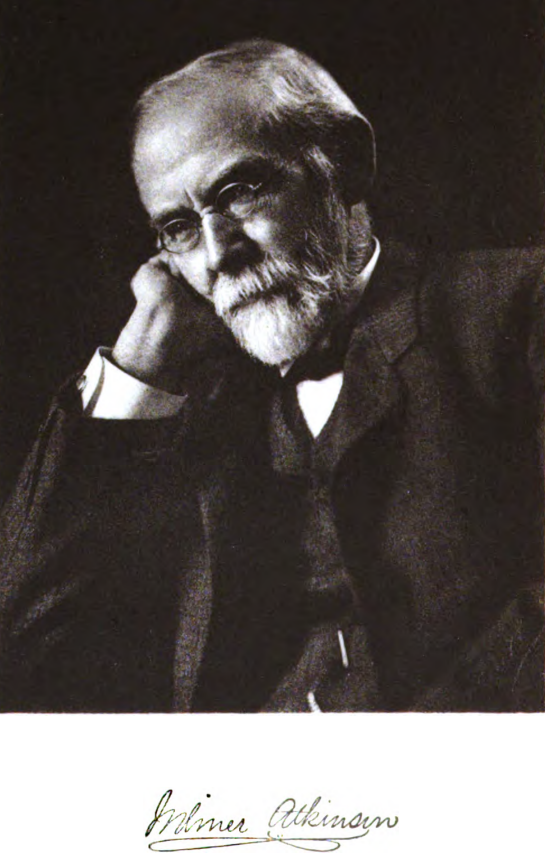

A Shade Garden’s Journey
We moved to Northview over twenty-five years ago. In the beginning the primary focus was to clear out a wide range of invasive plants. This is an on-going process but not nearly as overwhelming as it was to begin with. Once we had some spots clear I started to design some planting beds. One of the first areas that received attention was the Shade Garden – which was next to the children’s playset – so I could watch them and garden.
Once the ivy and poison ivy were reduced there was room to plant my favorite Virginia Bluebells (Mertensia virginica) and Bloodroot (Sanguinaria canadensis). I was lucky enough to be able to dig some bluebells up from my grandmother-in-law’s garden and they have colonized over the years.
The Shade Garden has undergone many changes including the removal of hundreds of Norway Maple trees – both large and small, to the planting of desirable trees and then last year to the loss of some due to a tornado spawned by Hurricane Ida. It is currently being re-evaluated to find out if I need to plant some more trees or shrubs to replace those that were destroyed.
From Plants to Print!
This is the garden that was used extensively as I tried out ideas that are written about in my book – Glorious Shade, Timber Press, 2017. It is a celebration of shady gardens and all of the wonderful plants that can be grown in these conditions.
Moss Garden, Stumpery and Whimsical Teacup Fountains
These parts of the Shade Garden have their own identity. The Moss Garden has a whimsical teapot themed fountain and teacup. The neighboring Stumpery contains roots and stumps from fallen trees that are upturned and then surrounded by ferns and epimediums. Beloved by Victorian gardeners, stumperies fit right in with the 1887 date of the house. The most famous stumperies are in England – one at Biddulph Grange in Staffordshire and at the other at Highgrove – the garden of King Charles III.
The Herb Garden – Useful and Beautiful
The Herb Garden is located at the heart of the garden. Its central path is lined up with the kitchen window. There are four symmetrical beds that surround a sitting area and then four smaller raised beds that were designed for vegetable growing. The whole garden is fenced to deduce herbivore browsing and contains a compost heap.
Herb growing has been a passion since childhood. I love the flavor of herbs in cooking and when I was sixteen my mother asked me to design and install an herb garden. I have grown herbs wherever I have lived since then and so it seemed an obvious choice for this garden. I cast the net wide and use the broadest possible definition of herbs. The Herb Society of America defines an herb as a plant for use and delight – so that covers pretty much everything I grow. I looked for culinary, dying herbs, medicinal plants and any others that people had used in their daily lives.
An Ever Evolving Plantscape
This garden has changed every year as I try new herbs and find some that I must grow every year. It has become more loose in style and more cottagey in nature as plants have self-sown and grown into larger patches. Herbs have been grown by humans for millennia and are by their nature easy to grow – maybe bordering on the rambunctious! It continues to provide me with useful herbs and gives me endless delight – especially on a warm sunny day when the smell of the volatile oils and the buzz of the bees takes me back to half-forgotten gardens of my childhood.

The Dry Garden – Lavender, Poppy and Milkweed
After a trip to Provence in 2003 I realized why I couldn’t grow lavender in my Herb Garden. It was time to design a drier garden that had leaner soil. During the winter I plotted and planned how to make the conditions just right for growing lavender.
I had seen in the south of France that the farms were all on sloped land, and that they were in full sun with limey soil. I designed this new garden to have berms of soil that provided the drainage and then topped them with a few inches of small river-pebble mulch.
The Art Of Neglectful Love
I developed the rest of my plant palette around the lavender to include any plants that I thought could survive in our climate without any additional watering. This has been such a fun experiment and over the years there have been some plants that have been too super aggressive that had to go and others that didn’t survive.
I am now left with a steady selection of plants that I love that love these neglectful conditions. They include some favorites like California Poppy (Eschscholzia californica) and Milkweed (Asclepias tuberosa).
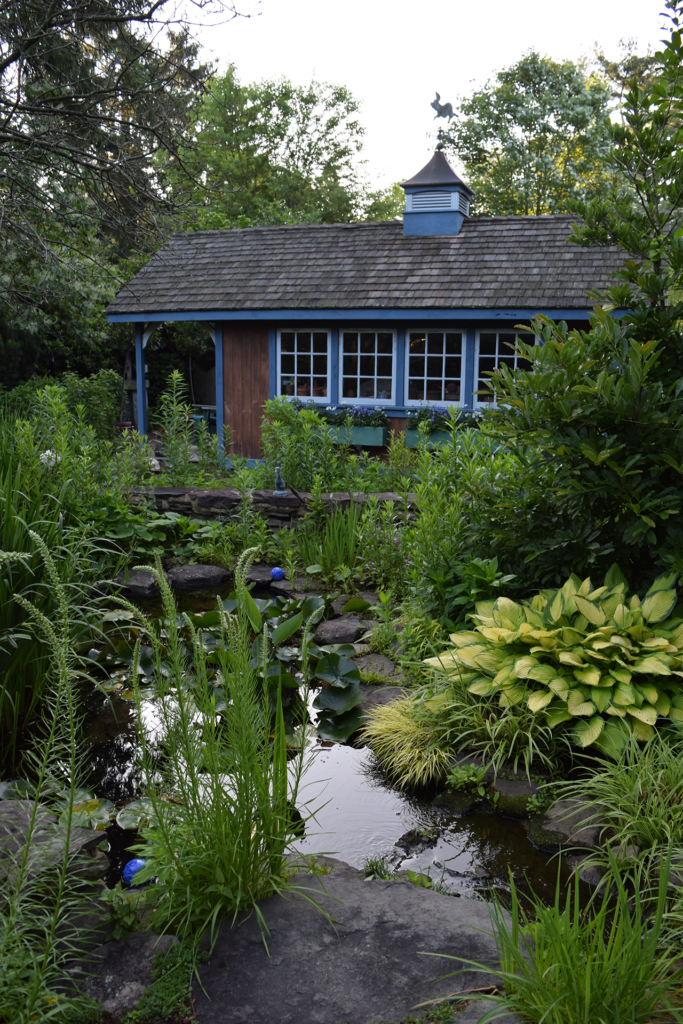
The Pond Garden – Patios, Stone Walls and Primulas
After the Dry Garden was installed, it seemed the right time to add a water feature to the garden. The series of ponds are located in a lower area that collects water that drains from a lawn. The ponds are surrounded by patio areas and garden beds that have moist soil at some times of the year.
Rose Cottage – Beech Trees, Frogs and Lobelia
The area is defined by curving dry stone walls and backed by a garden shed called Rose Cottage. One entrance is flanked by a pair of columnar beech trees. It has turned out to be a hub in the garden as several paths meet there and there are sitting areas. Before the pond was completed frogs moved in and since then they have been used by various animals such as a snapping turtle. Favorite plants in this area include primulas, lobelia, and Leucojum.
The Cutting Garden – A Late Summer Wonderland
The Cutting Garden is another fenced in area that was specifically designed to grow flowers for picking. There are a series of raised beds that hold a succession of flowers from the early daffodils and tulips to later zinnias, dahlias, and cosmos.
Like the other gardens it has changed in contents and nature over the years, but it remains one of our trail areas where we can actually grow plants that are eaten by rabbits and deer. It underwent a renovation after the tornado as the fence was destroyed and had to be replaced.
My favorite time in this garden is late summer and early fall when the annuals and dahlias are in full production and there are plenty of flowers for cutting, using, and giving away.
The Castle Garden – A Simple, Green Palette Cleanser
The nearby Castle Garden is a deliberately simple garden that is a quiet green sitting area to cleanse your floral palette after the riotous Cutting Garden. The crenellated hedges surround three long benches that embrace a triangular stone table. It is a perfect place to sit and contemplate the sky and trees above the garden and to rest awhile.
The Winter Walk – Snowdrops, Witch Hazel and Sarcococca Shrubs
On the other side of the garden is the Winter Walk leading to the Redbud Allee. This area borders the road and so is layered with trees and shrubs to baffle the noise. It is where you will find my scented witch hazel collection that is underplanted with late winter and early spring bulbs at ground level.
Snowdrops are a big feature here from February through March. There are many different types, some purchased, and some crossed by paintbrush or bees to produce our own unique ones. Sarcococca shrubs provide fragrance as you walk along the central track-like path.
Crabapples, Primroses and Iris
Crabapples, pulmonarias, and primroses carry the show through to spring. The Redbud Allee (Cercis canadensis Hearts of Gold) has more snowdrops, Iris reticulata ‘Cantab’ and later Lemon Drops Daffodils mingled with Jacob’s Ladder.
Hugelkulturs – It’s All About Wood
These Hugelkulturs are a set of three mounds that developed to reuse some rotting logs. The word Hugelkultur is German for ‘hill culture’. The mounds are created by piling up old organic debris with large logs at the bottom and mulch, soil, compost and woodchips on top – whatever you have available.
This a method popularized by advocates of permaculture as nothing goes to waste. As the logs rot down moisture and nutrients are provided to the root zone of the plants that grow on the Hugelkultur. We have tried various plants over the years. Some plants became overbearing and aggressive growers under these conditions. We are still trying to find the ones that grow well but do not take over.
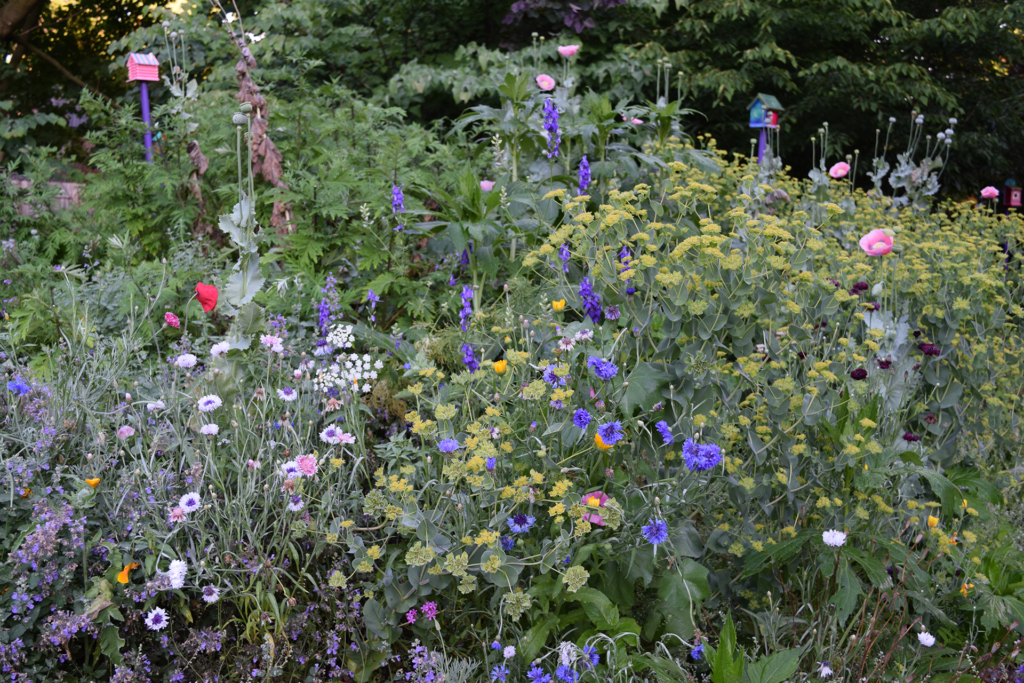
The Sunset Garden – A Secret Behind The Evergreens
Continuing your perambulation of the garden brings you to the Sunset Garden. This is tucked behind evergreens and it somewhat secret. The theme of this garden is another dry garden to allow me to grow more lavender on one bank. Another bank is called my Blast-from-the-Past bed – with the dwarf evergreens, heathers and Japanese maples of my childhood in England.
These two beds surround the central Sunset Garden which is circular like the setting sun and its rays. The planting is all yellow and is a patterned garden with a lovely, recycled curb stone rock to sit on and view the bridge and gardens. It is a favorite place to sit at the end of the day when the warm western rays of sun hit the rock and turn it into The Hot Rock ( a very pleasant to sit on – apart from on the hottest days).
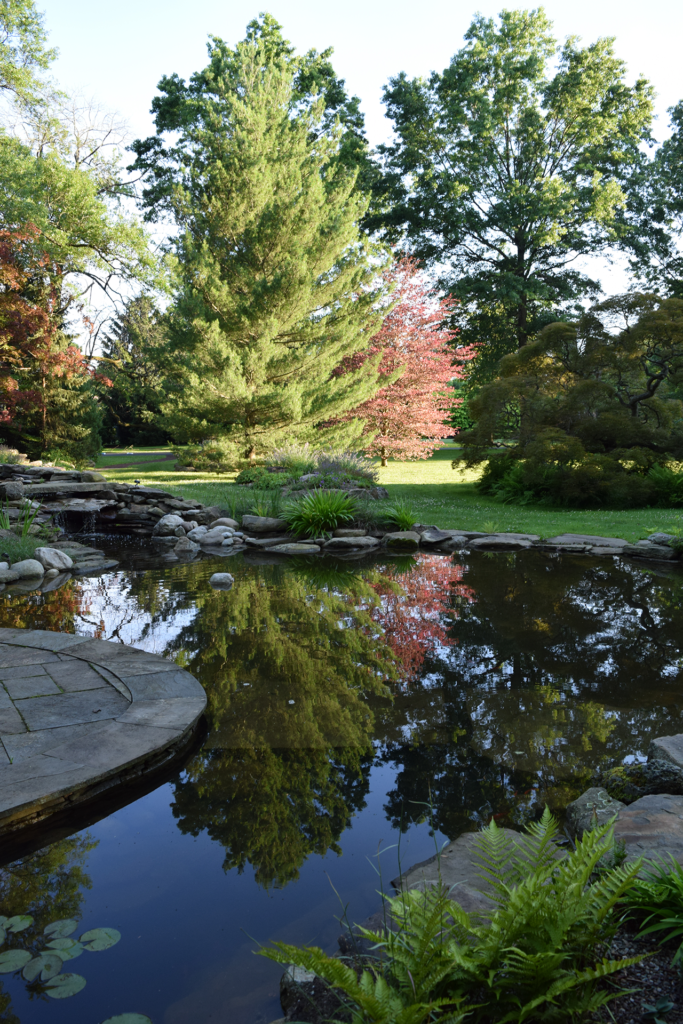
The Lake Garden – A Perfect Place For Hot Days
After you cross the driveway, the next garden is the Lake Garden that contains a waterfall and larger pond that is called The Lake to differentiate it from The Pond. On a hot day this is the place to be. The splashing water, the peaceful fish, and the gentle croak of frogs provides a perfect place to unwind.
Monticules and Tiny Floral Treasures
This is a garden of rocks but also a place for small garden beds, including three mounds called The Monticules. They contain tiny floral treasures including Trillium Roadrunner, delightful primulas, miniature daffodils and much more. Sheets of creeping phlox, dianthus, and later salvias and penstemon compete for the rocky planting pockets.
This raised and seemingly inhospitable area has allowed me to expand my planting choices and grow a wide range of plants that love sun and dry conditions.
The Moon Beds – A Pastel Paradise for Gatherings
Since we have a Sunset Garden, it makes sense to have some Moon Beds that are situated bordering the main tent lawn (for weddings and other big events). The colors are mostly pastels and whites so that the flowers show up in the dusk and in the evening when events are often held.
There are two sort of half-moon shaped beds that begin the year with a collection of historic daffodils (registered pre-1940). The daffodils are followed by a medley of different shaped cottage garden flowers like Alliums, Foxgloves, Verbascum, Poppies, Irises, Salvias and much more. The edges are lined with tiny treasures like hyssop, betony, and sweet alyssum.
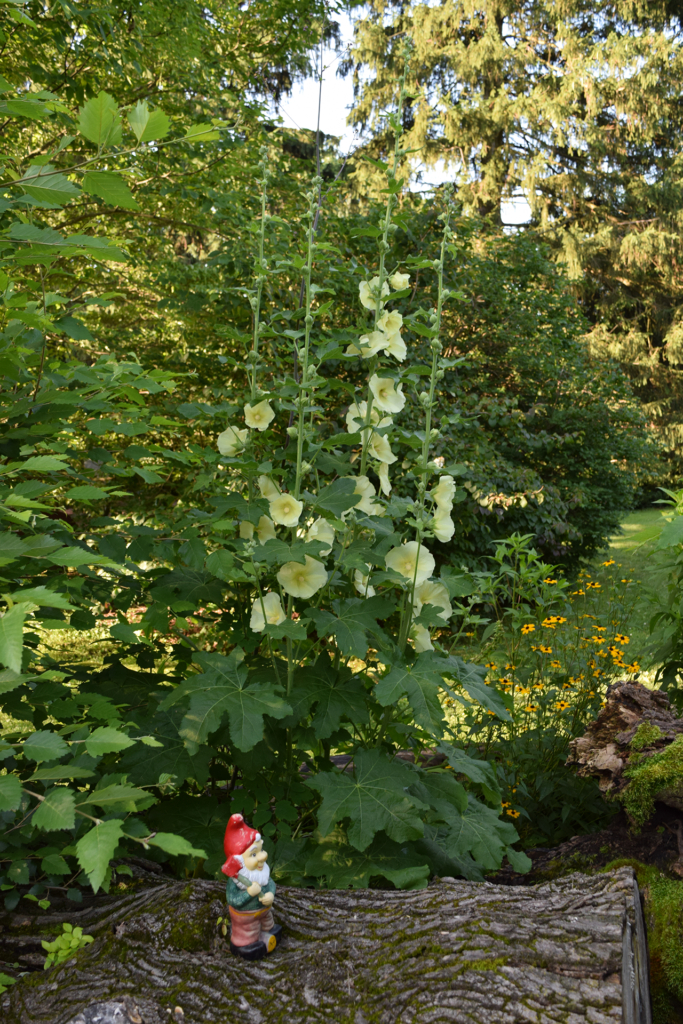
The Spring Garden – All Around The Carriage House
The final areas of the garden are located near to the Carriage House and outside the Cutting Garden Fence. They are small areas that each have their own identity. The area outside the kitchen door has a spring theme inspired by several trips to the Keukenhof in the Netherlands. It has several waves of spring flowering bulbs from early crocus and the first daffodils, through to Muscari, Anemone blanda, tulips and later daffodils. The colors are in pastels and whites for a lovely spring show.
The Gnome Home – A Haven For Magical Creatures
This little garden was created when yet another tree blew over and left a huge hole in the ground. The resulting stumps seemed just the place for my wandering collection of gnomes to finally call home. The plants have to seem to have gnome-like tendencies or maybe a suitable name.
The Stinze Garden – Old Dutch, English and Naturalistic Style
Is an area of weak lawn that is planted with spring bulbs in the style of old Dutch, English and naturalistic gardens like Winterthur in Delaware, USA. The name is from the Netherlands. The randomly planted bulbs pop up through the grass and then flower from March to April. The foliage is allowed to grow in order to feed the bulb to produce blooms next year. The grass is not cut until after July 4th.
The Book Bed – For Waves Of Peak Bloom
This long, narrow bed that wraps around the outside of The Cutting Garden is the one that was the trial garden as I developed the ideas for The Ultimate Flower Gardener’s Guide, Timber Press, 2022. I also used the bed at the side of the house, The Herb Garden, Dry Garden and Moon Beds.
The Book Beds are heavy on spring bulbs to tie in with the Stinze Garden across the path. The colors are white, blue, pinks and purples. It contains peonies, foxgloves, sweet William, hardy geraniums, campanulas, and at the end of the year hardy chrysanthemums. It has a long season of interest with waves of peak bloom.
The Rain Garden and Troutbacks – Natives, Shrubs and Perennials
At the bottom of the slope there is a garden that collects water runoff from this area of the garden. It is primarily plants that are native to America – with some shrubs and many perennials. The troutbacks are elongated berms that channel the water into the depression of the Rain Garden.
There is no liner in the bottom of the rain garden so that the water can slowly infiltrate back into the soil and replenish the groundwater. Some areas stay moist for longer than others. These spots are planted with water-loving plants. Further up the banks the soil is drier, so suitable plants are chosen for that situation.
Fruit and Flowers – Berries and Flowers Galore
The final garden area to be described is the garden behind the Carriage House known as Fruit and Flowers. The name says it all with raspberries, blackberries, and strawberries. Native Amelanchier and Aronia bear fruit for the birds. In the raised beds the contents change from year to year but usually include dahlias, zinnias, celosia, cosmos, gaillardia, snapdragons, and many more. The beds are used as test plots to compare cultivars, and for cut flowers. Many of the flowering plants are grown from seed in a small greenhouse and under lights in the garage.
There are a few other garden areas, but this describes most of the gardens that you see on a visit or hear about in a lecture. It is a very personal garden with choices of plants made because I like them. I have greatly benefitted from the knowledge of gardeners that I have known, books that I have read, and gardens that I have visited. I hope that you will find some inspiration from my gardens at Northview.


